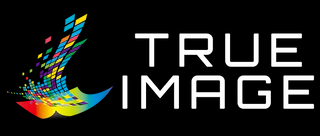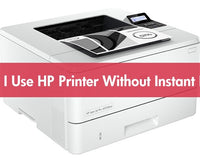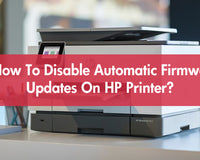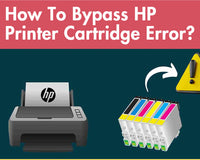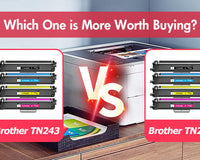What is secure printing? How does it work? Secure printing is a critical component of any organization's overall data security strategy. In today's digital age, where information is constantly being transmitted and shared, the need for secure printing has become increasingly important. By implementing secure printing practices, organizations can ensure that their printed materials are protected from unauthorized access, helping to maintain confidentiality and prevent potential data breaches. This True Image blog will explore the definition and importance of secure printing.
Index
What Is Secure Print?
Secure printing is a technology designed to enhance the security of document printing in a shared or networked environment. It prevents unauthorized access to printed documents by ensuring that documents are released from the printer when the intended recipient authenticates them. This process typically involves the use of a unique code, PIN, or other form of authentication that the user must enter at the printer to retrieve their print job. Secure print solutions help protect sensitive information from being exposed to prying eyes, reducing the risk of data breaches and maintaining compliance with privacy regulations.
|
Recommended Blogs: 🍄 What Is Digital Printing? How Does It Work? |
Secure Printing VS Pull Printing
🌳Secure Printing:
- Focuses on enhancing the security of printed documents by requiring authentication before a print job is released.
- Ensures that only the intended recipient can access and retrieve their printed documents.
- It can be implemented using various authentication methods, such as PINs, swipe cards, or mobile device-based solutions.
- Promotes a more secure and controlled printing environment, reducing the risk of sensitive information falling into the wrong hands.
🌳Pull Printing:
- It is a form of secure printing that allows users to release their print jobs from any printer on the network rather than being tied to a specific printer.
- Users submit their print jobs as usual, but the documents are held in a queue until the user authenticates and selects the printer they wish to use.
- Offers increased flexibility and convenience, as users can choose the most convenient printer based on their location or availability.
- Like secure printing, pull printing also enhances security by ensuring that documents are released when the intended recipient authenticates them.

Secure Printing VS Typical Printing
🌳Secure Printing:
- Employs authentication mechanisms to ensure that only authorized users can access and retrieve printed documents.
- Reduces the risk of sensitive information being left unattended on printers or stolen by unauthorized individuals.
- Increases compliance with privacy regulations and data protection laws.
- It may require additional hardware or software investments but offers a higher level of security and control over printed documents.
🌳Typical Printing:
- Does not involve any authentication or authorization processes.
- Documents are printed and released immediately, making them vulnerable to unauthorized access or theft.
- Increases the risk of sensitive information being exposed, especially in shared or public printing environments.
- It may be less expensive to implement and maintain but offers limited security and control over printed documents.
In summary, secure printing provides a more secure and controlled approach to document printing, while typical printing lacks these security features. Pull printing, as a form of secure printing, offers additional flexibility and convenience while maintaining the same level of security.
Key Types Of Secure Printing
🥦Authentication-Based Printing
Authentication-based printing is a widely adopted secure printing solution that mandates users to authenticate themselves before releasing print jobs from the printer. This method involves entering a unique PIN code or password or using a smart card to verify the user's identity.
By requiring authentication, it significantly enhances the security of printed documents, preventing unauthorized access and ensuring that only authorized individuals can access their printouts. Additionally, this approach offers flexibility as users can release their print jobs from any printer that supports the authentication system, making it convenient for users who move around within an organization.
🥦Encrypted Printing
Encrypted Printing takes security to the next level by encrypting print jobs before they are sent to the printer. This ensures that even if the print job is intercepted during transmission, it remains unreadable to unauthorized users without the correct decryption key. The printer must have the decryption key to process and print the document, thus providing a robust defense against data breaches and theft. Implementing encrypted printing requires careful management of encryption keys, but the added layer of security it provides is invaluable for organizations handling sensitive information.
🥦Follow-Me Printing (or Pull Printing)
Follow-me printing, also known as Pull Printing, revolutionizes the traditional printing experience by empowering users to send print jobs to a central print server and release them from any printer on the network at their convenience.
Follow-me printing eliminates the need for users to be physically present at a specific printer, increasing flexibility and convenience. When users are ready to print, they authenticate at a printer of their choice and select their print job from a secure queue. Follow-me printing not only improves efficiency but also reduces the risk of print jobs being left unattended, as users only retrieve their prints when needed.

🥦Secure Group Printing
Secure Group Printing is a strategy that enhances printing security by grouping printers and endpoint devices into a secure network. In this setup, only devices that belong to the designated group can send and receive print jobs, effectively isolating the printing environment from potential threats. This type of secure printing is ideal for organizations with multiple departments or locations, as it allows for fine-grained control over print access. Administrators can easily manage access permissions and monitor printing activities within the group, ensuring that only authorized users have access to sensitive printouts.
🥦Auditing and Tracking
Auditing and Tracking are crucial components of any secure printing solution. By monitoring and recording printing activities, organizations can gain valuable insights into how their printing resources are being used. This information can be used to identify potential security threats, enforce printing policies, and optimize printing costs. Auditing and tracking features typically include logging of print jobs, user identities, timestamps, and other relevant details. Administrators can use this data to generate reports and analyze trends, enabling them to make informed decisions about their printing environment.
Summary: Secure print is a set of technologies and practices designed to protect sensitive information during the printing process. It includes various types of secure printing, such as authentication-based printing, encrypted printing, follow-me printing, secure group printing, and auditing and tracking, each of which offers unique benefits for enhancing the security of printed documents.
Tips: When it comes to printing security, it is very important to select reliable ink and toner cartridges for your printer. For high-quality HP/Brother/Canon ink and toner cartridge replacements, come and buy at True Image.
|
You May Also Interested In: |
